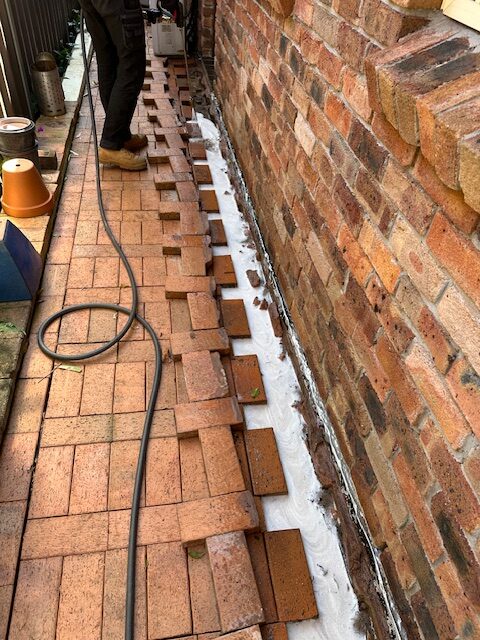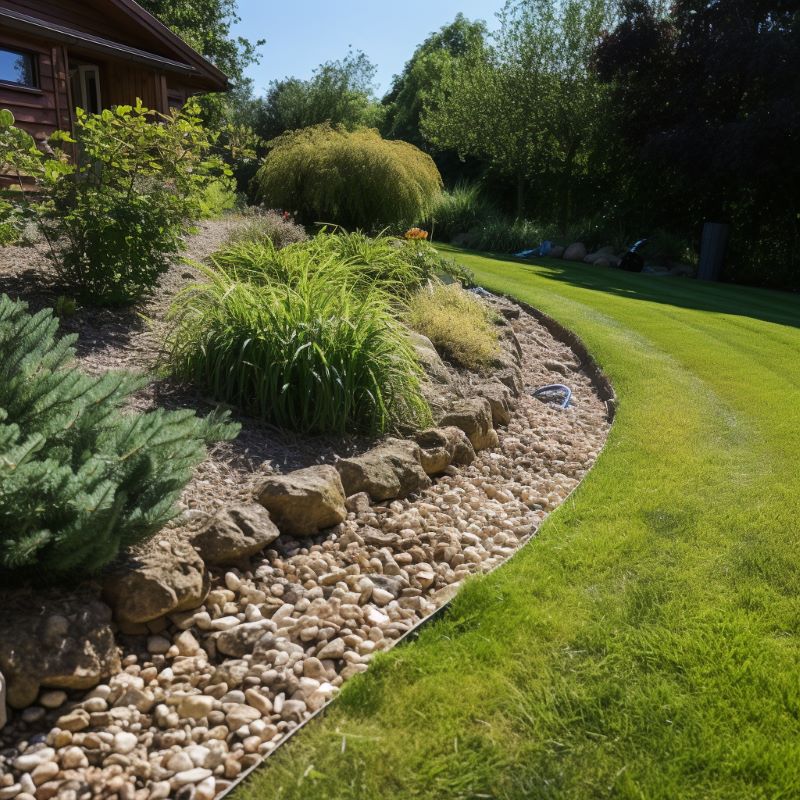Landscaping not only enhances the visual appeal and value of your home but also requires careful planning to maintain the integrity of essential termite barriers. These protective systems are crucial in safeguarding your property against damaging termite infestations. However, certain landscaping decisions and maintenance practices can inadvertently compromise these barriers, diminishing their protective capabilities. This guide aims to provide you with vital strategies and insights to ensure that your landscaping choices do not jeopardize your termite defenses while effectively preserving these protective systems around your home.
The Essential Importance of Termite Barriers for Your Home's Protection
Termite barriers are specialized protective measures, either physical or chemical, installed strategically around or beneath your home to prevent termites from accessing your property. Every homeowner should prioritize having a comprehensive termite management system, and understanding the type currently in place is essential for effective property maintenance. A simple way to confirm this is by checking the information found in your electrical meter box. These barriers are vital in protecting structures, especially in areas like Sydney’s Hills District, where termite activity is particularly high. By understanding the role and types of barriers available, homeowners can make informed decisions that enhance their property’s defenses against these destructive pests.
- Physical Barriers: Made from durable materials such as stainless steel mesh or graded stones, these barriers are installed below a building to effectively prevent termites from tunneling through.
- Chemical Barriers: This method involves applying liquid termiticides to the soil surrounding a structure, creating a treated zone that deters or eliminates termites from accessing your home.

Recognizing Landscaping Practices That Threaten Your Termite Barriers
Many common landscaping practices can unintentionally damage or undermine the integrity of termite barriers, creating vulnerabilities that could lead to severe infestations. Understanding these practices is essential for maintaining effective protection against termites. For instance, simple actions like planting too close to your home can introduce numerous risks that put your property at jeopardy.
1. Planting Too Close to Your Home
When plants, shrubs, or trees are positioned too near your house, they can introduce a range of issues:
- Roots may penetrate physical barriers or disrupt the treated soil in chemical barriers, significantly reducing their effectiveness.
- Dense vegetation can retain moisture adjacent to the building’s foundation, creating an inviting environment for termites to thrive.
2. Adding New Soil or Mulch
Introducing layers of soil or mulch near the foundation can create a bridge over chemical barriers, allowing termites to bypass these essential protections. Organic mulch is especially problematic as it can serve as both food and shelter for termites, making it an attractive habitat for these pests. Homeowners should consider alternatives that minimize the likelihood of termite attraction.
3. Paving and Hardscaping Projects
The installation of paving, patios, or retaining walls near your property can disrupt existing termite barriers. The excavation and soil movement required for these projects might compromise the chemical seal or create gaps in physical barriers, leading to increased vulnerabilities. It's crucial to assess any changes in landscaping thoroughly to ensure that termite defenses remain intact during such modifications.
4. Irrigation System Considerations
Poorly designed or excessively watered irrigation systems can saturate the soil surrounding your foundation. This not only dilutes the effectiveness of the termiticides in chemical barriers but also fosters a favorable environment for termite proliferation. Proper irrigation management is key to maintaining a dry perimeter that deters pest invasions.

Implementing Landscaping Techniques That Protect Your Termite Barriers
1. Ensure Safe Clearance from Your Home
- Maintain a distance of at least 50 cm between plants and trees and your home’s foundation, creating a safe barrier that protects against termite access. This distance is crucial in minimizing the risk of roots penetrating barriers that could otherwise protect your home.
- Select smaller, non-invasive plants that are less likely to develop extensive root systems capable of interfering with your barriers, ensuring that the landscaping choices made are conducive to the health of your home.
2. Choose Termite-Resistant Mulch Options
- Opt for inorganic mulches such as gravel or stone, or consider using termite-resistant materials like cedar or cypress chips to minimize risk. These materials not only enhance the aesthetic appeal but also lower the chances of attracting termites.
- Keep mulch piles to a maximum height of 5 cm and maintain them at least 15 cm away from the foundation to reduce moisture retention and discourage termite activity, thus ensuring that your home remains a less inviting environment for pests.
3. Avoid Disrupting the Barrier During Landscaping
- Consult with a professional before engaging in any digging or installation of landscaping features near your home to prevent disturbing the termite barriers or termite baits. Professional guidance can help maintain the integrity of these protective measures.
- If soil alterations are necessary, it’s advisable to have the barrier reinspected and potentially retreated to ensure ongoing protection against termites, as even minor changes can have significant implications for your property's defenses.
4. Thoughtful Design Considerations
- Position irrigation systems away from the foundation to prevent excessive moisture accumulation near the barrier, which can attract termites. This proactive measure can significantly reduce the risk of infestation.
- Install root barriers for larger trees to prevent roots from encroaching on the termite barrier and causing potential damage, thus safeguarding your property from unintentional breaches.
- Be mindful of termite reticulation pipes to avoid damaging them during landscaping activities, as these systems are integral to maintaining your home's defenses against termites.
Crucial Steps to Take if Your Termite Barrier is Disrupted
If landscaping activities or natural events have disturbed your termite barrier, taking swift action is essential to protect your home:
- Schedule a Professional Inspection: A thorough termite inspection is crucial to identify vulnerabilities and determine whether termites have breached your protective barriers. Early detection can save you from costly damages.
- Reinforce Your Barrier: Based on the inspection results, physical barriers may need repairs, while chemical barriers might require retreatment or a top-up to restore their effectiveness. Prompt action ensures that your home remains protected.
- Implement Regular Monitoring: Routine inspections for termites are essential to ensure that your barrier remains intact and your property stays protected from infestations. A proactive approach can prevent future problems and safeguard your investment.
Landscaping Strategies That Boost Your Termite Protection
With thoughtful planning and strategic design, your landscaping can effectively support your termite protection efforts. By creating intentional barriers and implementing best practices, you can create a safe environment:
- Incorporate gravel paths or decorative stones along the foundation to create a dry zone that deters termite activity. This simple addition can significantly enhance your home's protection.
- Utilize raised garden beds with sufficient clearance from the house to minimize moisture retention near the foundation, thus keeping the area less hospitable for termites.
- Regularly trim vegetation to ensure proper ventilation and reduce moisture buildup, creating an inhospitable environment for termites and promoting overall landscape health.

Landscaping can be designed thoughtfully to enhance, rather than compromise, your termite barriers. By developing a thorough understanding of how various landscape designs impact termite protection, you can achieve a beautiful and pest-free home environment. For expert termite advice or assistance with maintaining your barriers, reach out to our knowledgeable team today. Let us partner with you to secure your home while you create the landscape of your dreams.
The Article: Termite Barriers for Effective Landscaping Solutions first appeared on https://writebuff.com.
The Article Termite Barriers: Essential Solutions for Landscaping Was Found On https://limitsofstrategy.com


What an insightful exploration of an often overlooked but critical aspect of home ownership! Landscaping is like accessorizing for your home; you want the outfit to look fabulous, but nobody wants to end up with a fashion faux pas—especially if it compromises the integrity of your termite barriers. I can almost picture it: one minute you’re selecting the perfect hydrangeas, and the next, you’re inadvertently luring a battalion of hungry termites right into your prize-winning flower bed.
It’s great to hear that you found the exploration of landscaping’s impact on home ownership resonating. You’ve hit the nail on the head with the analogy—selecting plants can feel a lot like curating an outfit. You want your home to look inviting and chic, yet there’s that undercurrent of practicality, especially when it comes to keeping pests like termites at bay.
You’ve hit the nail on the head with your comparison of landscaping to accessorizing. It’s such a delicate balance, isn’t it? Selecting those perfect hydrangeas can be a joyful process, but it’s all too easy to overlook the potential consequences for your home’s structure. The idea of luring a battalion of termites into your garden while you’re focusing on those prize-winning blooms is not just a whimsical thought—it’s a real risk for many homeowners.
“Want to keep your landscape stunning and termite-free? Check out our guide for tips on balancing beauty and protection!”
https://mannland5.com/quillbot
You’ve captured the essence of landscaping perfectly. It really is about striking that balance between beauty and practicality. Selecting the right plants can sometimes feel like a delicate dance, especially when you want to enhance curb appeal without inviting trouble.
Finding that perfect balance between beauty and practicality is such a meaningful endeavor, especially in landscaping. You’re right when you say selecting the right plants often feels like a delicate dance. It’s not just about choosing what looks good; you also have to think about how those choices will impact your space in the long run.
It’s fascinating to delve into the relationship between landscaping and termite barriers, as the latter often goes unnoticed until a severe problem arises. I appreciate how you highlighted the careful balance that homeowners need to maintain between creating a beautiful outdoor space and ensuring the integrity of these critical protective systems.
You bring up a good point about the often-overlooked intersection of landscaping and termite barriers. It’s interesting how so many homeowners focus on creating a picturesque yard while the underlying structures designed to protect their home are sometimes neglected in the process.
“To explore more about maintaining that essential balance while enhancing your outdoor space, check out our comprehensive guide on effective landscaping and termite protection!”
https://mannland5.com/octopus
It’s great to see that the relationship between landscaping and termite barriers resonated with you. It often feels like these protective systems exist in the background, quietly working to keep our homes safe until we overlook them—then the trouble starts. Balancing aesthetics with functional elements like termite barriers can be tricky. Homeowners often get swept up in the desire for a beautiful garden or yard, but it’s crucial to remember that some of the most beautiful landscapes can inadvertently compromise our homes if we’re not paying attention.